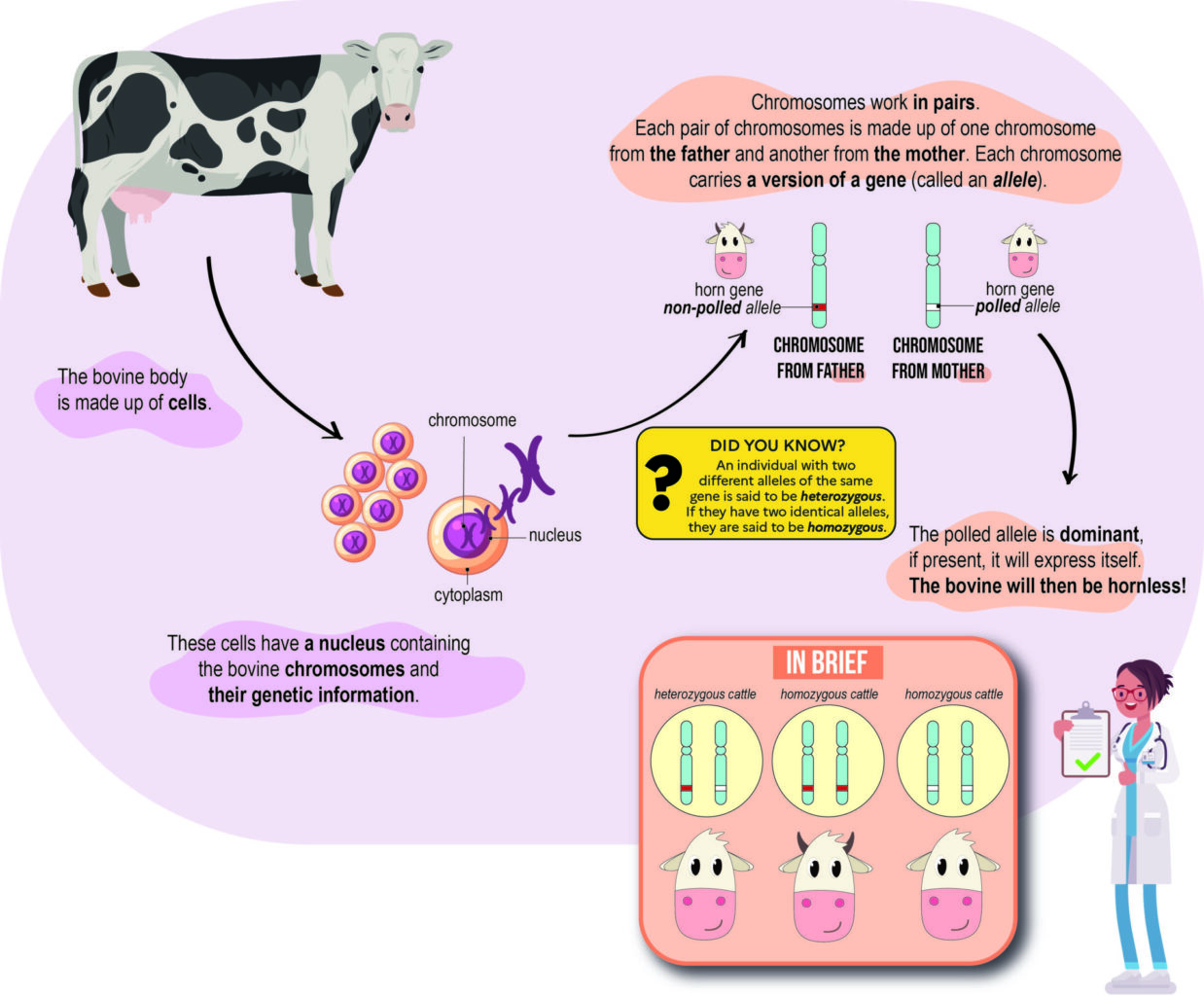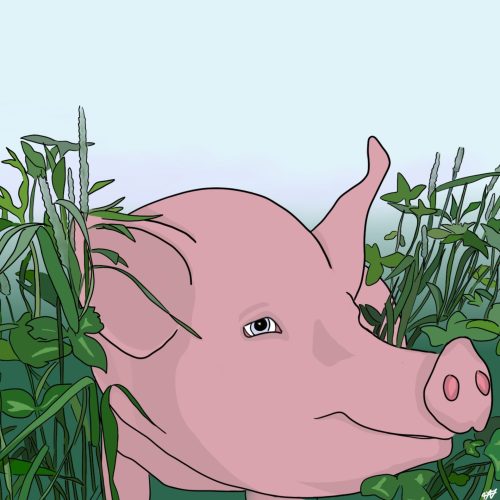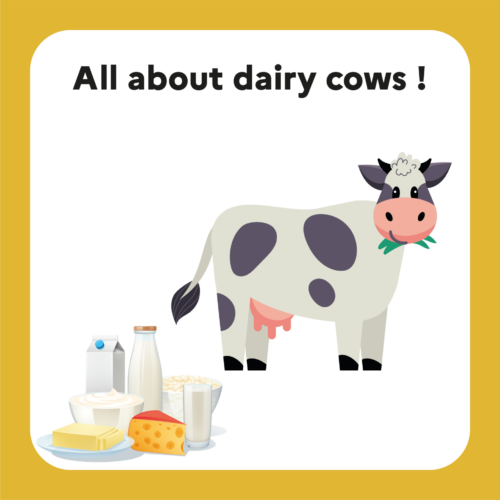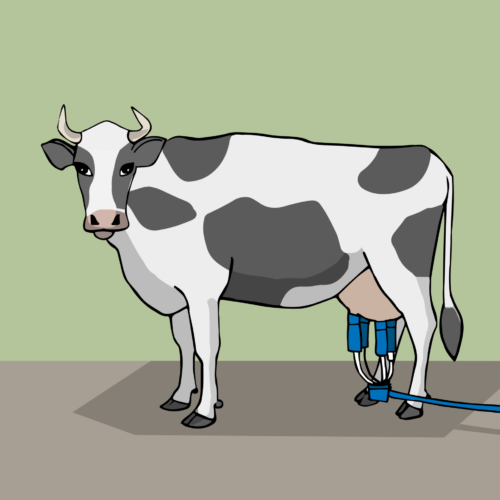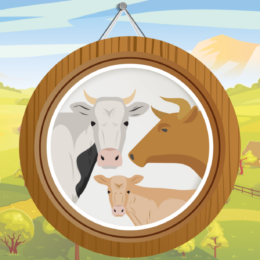

FALSE
Cows have horns too!
keep in mind
- Horns are present in both males (bulls) and females (cows)
- Cattle use their horns to communicate during social interactions
- Cattle’s horns are removed, either by disbudding or dehorning for safety reasons
- Some cattle are born polled, i.e. nautrally hornless
What are cattle horns? How do they form?
Horns are permanent bony outgrowths that form and develop on the head of certain breeds of cattle from what is known as the “horn bud”, which cells then grow into the horn’s core. Up to about 6 weeks of age, the horn bud floats in the skin above the skull, and therefore is not attached to the skull bone. When the calf is about 6 weeks to two months old, the horn fuses to the frontal bone of the skull. A sinus (cavity) appears inside the skull beneath the horn. As the horn grows and fuses to the skull, this frontal sinus extends into the part of the horn adjacent to it. The horn and sinus then share the same mucous membrane. In this way, horns grow throughout a bovine’s life.
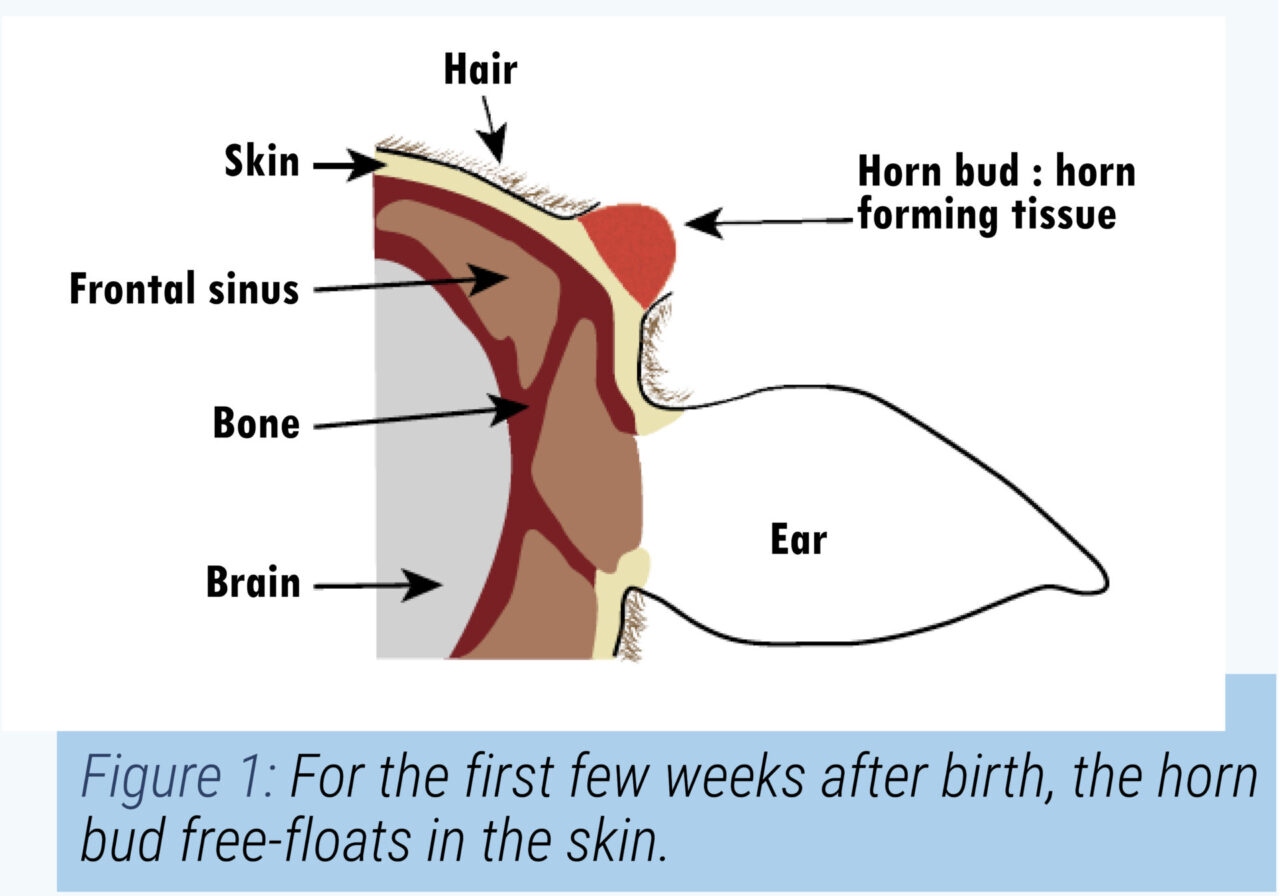
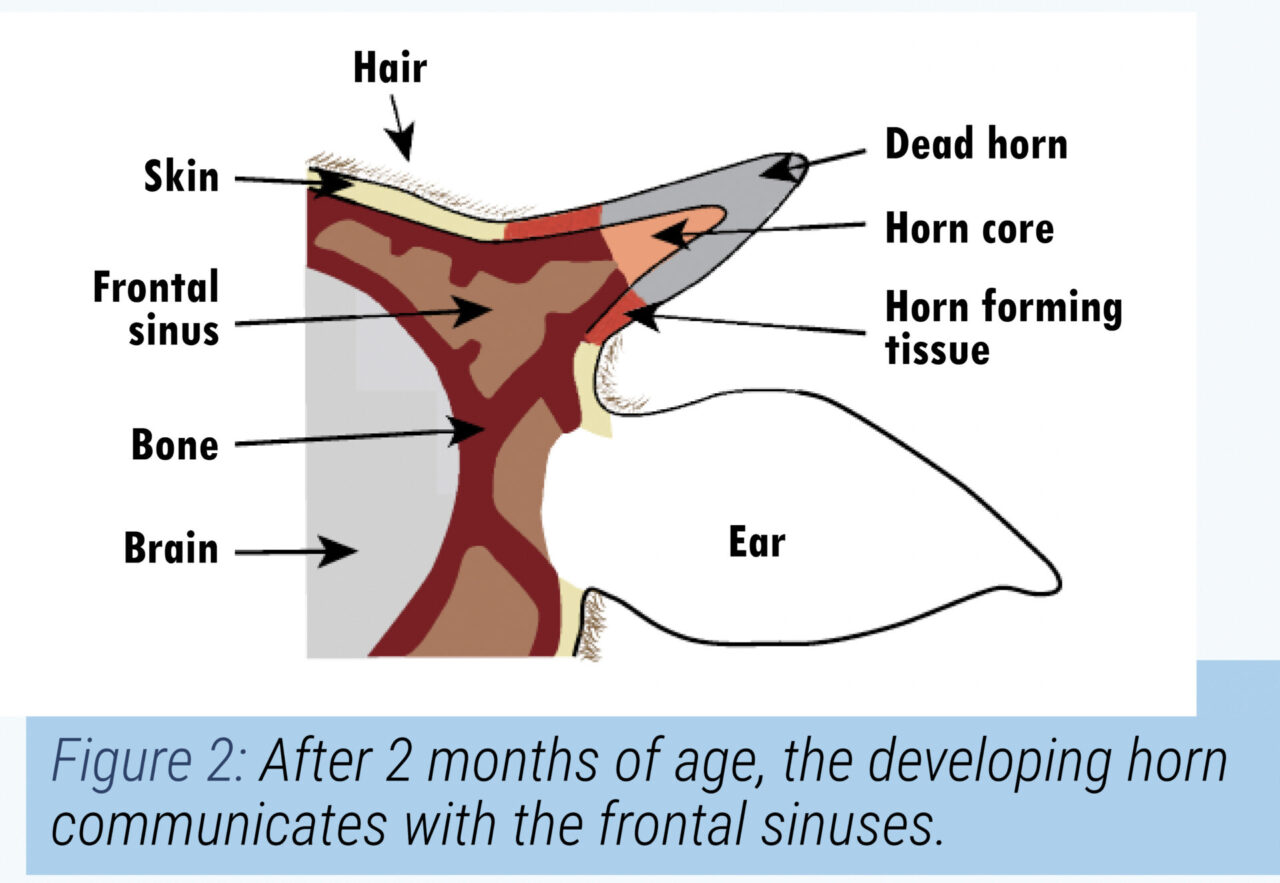
Unlike cervid antlers, bovid horns are permanent, consisting of an outer sheath of keratin and a bony core with cavities (sinuses). These horns are present in both males (bulls) and females (cows). This area of the head is innervated and richly vascularized, whatever the stage of development: horn bud – horn core – horn. This means that destroying the cornual bud or core, or cutting the horn, will generate intense pain for the bovine, which may last several days if left untreated.

Did you know?
Unlike cattle, most cervids don't have horns, but antlers. These antlers are not permanent, and fall off every year after the rut.
What is the purpose of horns for cattle?
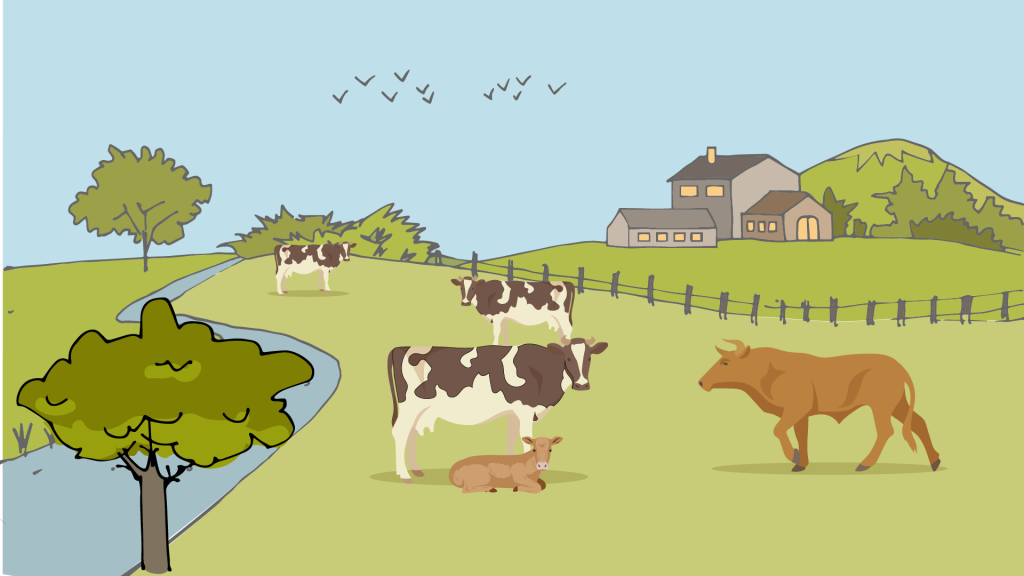
Cattle use their horns to communicate during social interactions[1] [2]. In a herd made up of horned cattle and other cattle without horns, the horned cattle are generally dominant[3], but many other factors may come into play, such as genetic factors, feed availability, social group management, etc[4].
However, while the presence of horns confers a significant advantage when a social order is established, the removal of horns from a well-established group has little – if any – effect on relationships[5]. Finally, cows with horns do not show more agonistic behaviors (threats, head-butting, etc.) than cows without horns. However, the presence of horns alters the pattern of agonistic interactions[6]: cows with horns generally perform a higher proportion of non-contact interactions, such as threats[7].
Cattle can also use their horns for other purposes, such as scratching[8]. Breeders have reported that some cattle are able to use them to open headlocks.
Do all breeds of cattle have horns? Is it gender-related?
Evidence of the existence of hornless domestic cattle dates back to Ancient history, as shown by several scenes in ancient Egyptian tombs. Historically, most cattle in France had horns.
However, since the 1960s, cattle farming has seen the replacement of traditional stanchion barns, where cattle are tethered side by side, by free stalls where cattle can move around. This increases the risk of injury (among cattle and to the farmer) if animal density is too high and/or the housing poorly designed[9]. This change in housing has led to the need, for safety reasons, to raise cattle without horns.
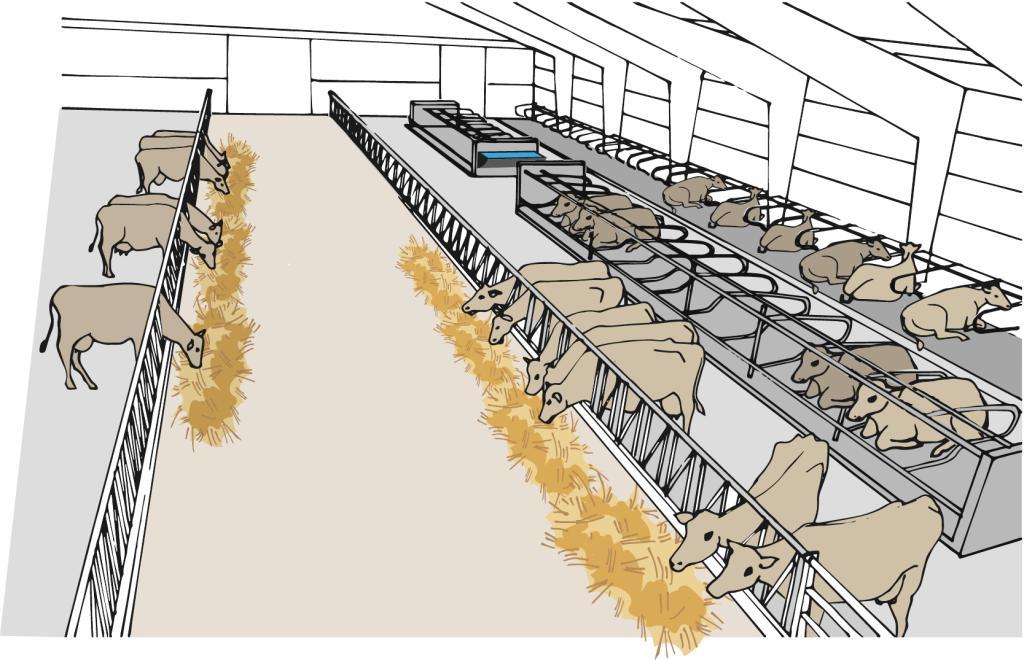
With the evolution of stalls, the share of cattle without horns has risen to 87% for dairy cows (98% of dairy cows housed in free stalls, and 60% of dairy cows housed in stanchion barns) and 61% for suckler cows (70% of suckler cows housed in free stalls, and 25% of suckler cows housed in stanchion barns)[10]. Breeders and livestock professionals use two methods to do this:
- destruction of the horn bud in calves (disbudding)
- destruction of the horn on adult cattle (dehorning)
Disbudding should be preferred to dehorning. As the horn is not yet attached to the skull bone and not in contact with the frontal sinus, disbudding is less invasive than dehorning and is associated with a lower risk of hemorrhage and infection. However, both disbudding and dehorning are sources of pain and associated stress, if no anesthetic or analgesic is administered[11].
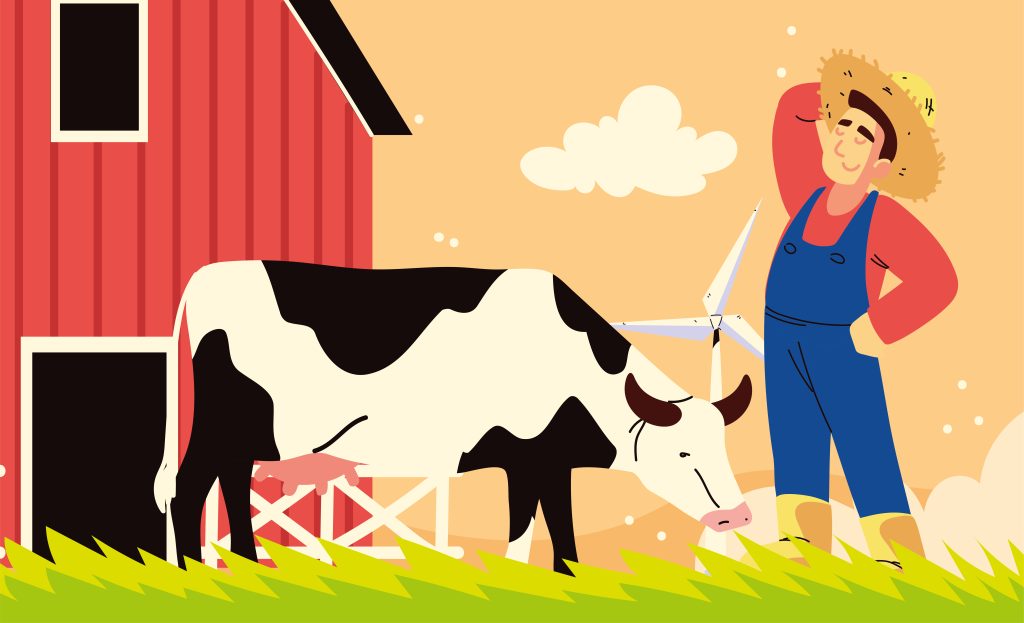
These practices are therefore questioned in terms of animal welfare. There are several ways of minimizing pain: “Suppress, Substitute and Soothe”, as promoted in the 3S approach[12]. Practical guidelines[13] and training courses, including one created by a number of our partners (IDELE, Chambre d’Agriculture de Bretagne, Chaire bien-être animal, INRAE…), have been developed to improve techniques and eliminate pain during and after these procedures[14].
Some cattle are born polled, i.e. naturally hornless. Several exclusively polled breeds of cattle originate from Great Britain, such as the Angus and Galloway breeds.
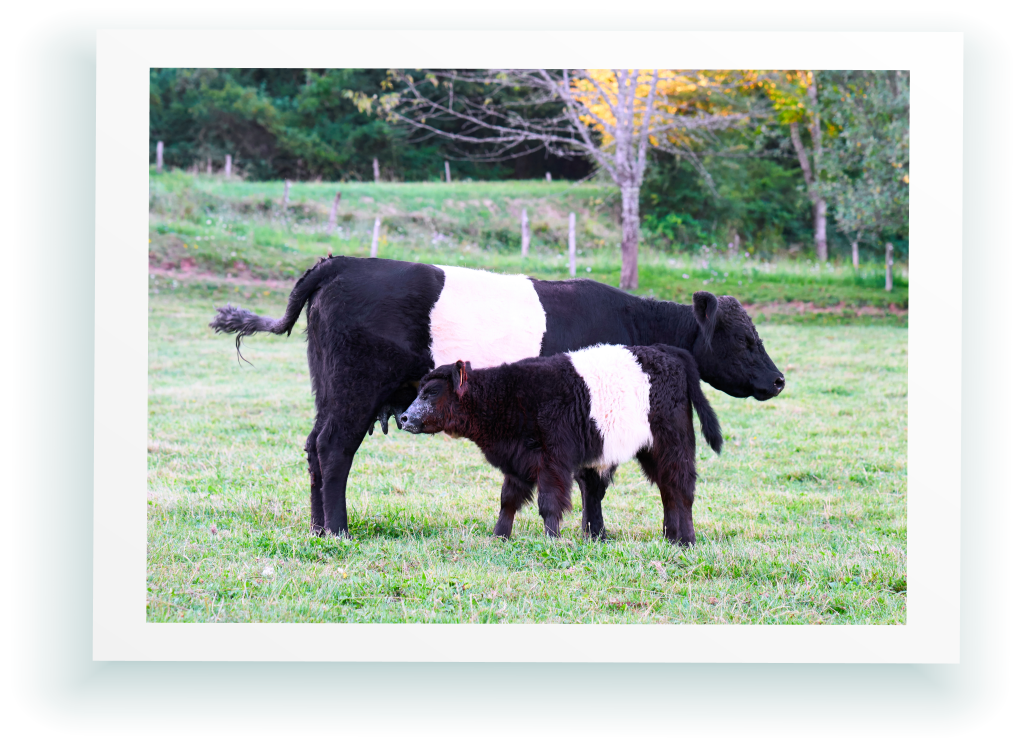
To avoid having to remove horns from cattle, breeders selected polled cattle, and gradually introduced this trait into several selection schemes for other cattle breeds, such as the Prim ‘Holstein. The genetic factors underlying this trait have been the subject of numerous scientific studies[15]. Polledness is a Mendelian trait, meaning that it is inherited from one generation to the next (from parents to offspring). It is carried by a non-sex chromosome (autosome), meaning that whether an animal is polled or not is not determined by its sex: males and females can be polled or not. What’s more, polledness is a dominant trait, meaning that polled cattle are either homozygous (two copies of the polled allele) or heterozygous (one copy of the polled allele and one copy of the non-polled allele).
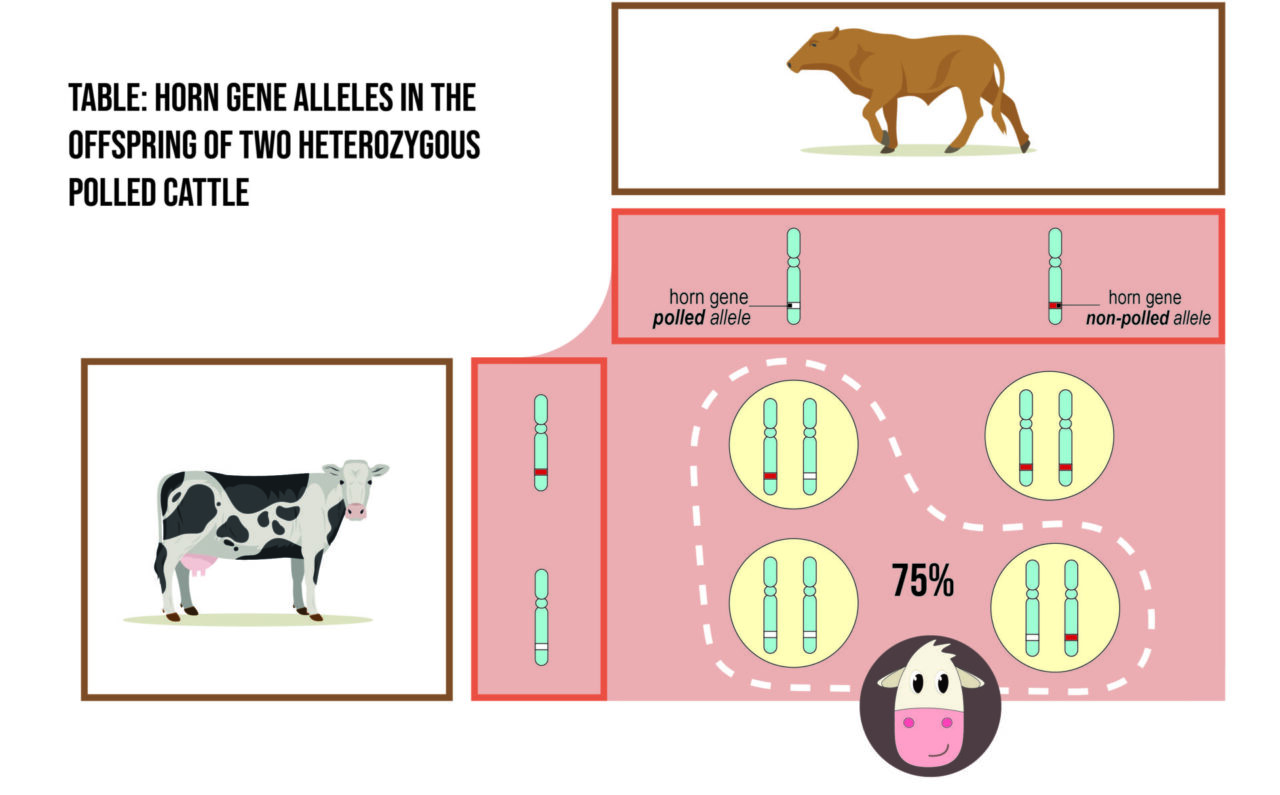
From all this it follows that:
▪︎ Animals carrying a copy of the polled allele (heterozygous animals) will pass it on to an average of 75% of their offspring (50% will be polled heterozygous and 25% polled homozygous), who will therefore be born hornless.
▪︎ When two polled animals mate, around 75% of resulting offspring are polled, but this percentage can rise to 100% if one of the parents carries two copies of the polled allele (homozygous).
▪︎ Animals that develop horns after birth cannot transmit the polled allele, and when two such animals are mated, none of their offspring will be polled.
In conclusion
Research studied by Alice de Boyer des Roches, zootechnics and animal welfare professor
[1] Knierim, U., N. Irrgang, and B.A. Roth. 2015. To be or not to be horned—Consequences in cattle. Livestock Science 179:29–37. https://doi.org/10.1016/j.livsci.2015.05.014
[2] Lutz, J., J.-B. Burla, L. Gygax, B. Wechsler, H. Würbel, and K. Friedli. 2019. Horned and dehorned dairy cows differ in the pattern of agonistic interactions investigated under different space allowances. Applied Animal Behaviour Science 218:104819. https://doi.org/10.1016/j.applanim.2019.05.008.
[3] Bouissou, M.F., A. Boissy, P. Le Neindre, and I. Veissier. 2001. The social behaviour of cattle. L.J. Keeling and H.W. Gonyou, ed. CAB International, Oxon, UK.
[4] Review Knierim and al., 2015
[5] Bouissou et al., 2001
[6] Knierim et al., 2015
[7] Lutz et al., 2019
[8] Knierim et al., 2015
[9] It should be noted that today, tie-stalls are still very present in mountain areas in Europe and North America.
[10] Kling-Eveillard, F., A.C. Dockes, D. Ribaud, and L. Mirabito. 2009. Cattle dehorning in France: farmers’ practices and attitudes. Rencontres Recherche Ruminants 16:249–252
[11] Herskin, M.S., and B.H. Nielsen. 2018. Welfare Effects of the Use of a Combination of Local Anesthesia and NSAID for Disbudding Analgesia in Dairy Calves—Reviewed Across Different Welfare Concerns. Frontiers in Veterinary Science 5:117. https://doi.org/10.3389/fvets.2018.00117
[12] Guatteo, R., O. Levionnois, D. Fournier, D. Guémené, K. Latouche, C. Leterrier, P. Mormède, A. Prunier, J. Servière, C. Terlouw, and P.L. Neindre. 2012. Minimising pain in farm animals: the 3S approach – ‘Suppress, Substitute, Soothe’. animal 6:1261–1274. https://doi.org/10.1017/S1751731112000262
[13] Alcasde. 2009. Final recommendations to DG SANCO regarding the alternatives to the dehorning.
[14] Le Guénic, M., G. Trou, J. François, A. Aupiais, A. de Boyer des Roches, B. Mounaix, and F. Kling-Eveillard. 2016. Evolutions des pratiques et des représentations suite à la formation « J’écorne facilement, efficacement et sans douleur ». Rencontres Recherche Ruminants 23:310.
[15] Review of Prayaga, K.C. 2007. Genetic options to replace dehorning in beef cattle—a review. Aust. J. Agric. Res. 58:1. https://doi.org/10.1071/AR06044
keep in mind
- Horns are present in both males (bulls) and females (cows)
- Cattle use their horns to communicate during social interactions
- Cattle’s horns are removed, either by disbudding or dehorning for safety reasons
- Some cattle are born polled, i.e. nautrally hornless
KEY FIGURE
is the share of dairy cows without horns in France

